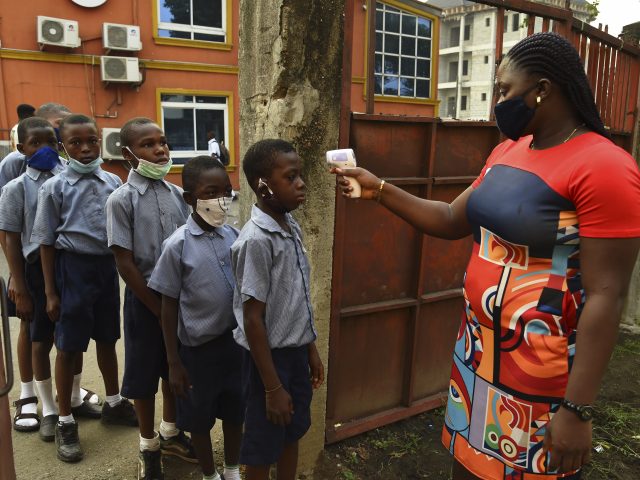By Bayo Ogunmupe
Cases of COVID-19, particularly the delta variant, have surged the world over, largely in the United States, Great Britain, the European Union and Africa. This coincides with when schools were due to resume this September.
An epidemiologist explains what measures will help stop the spread of the COVID-19 pandemic and what won’t. He explains that vaccines and masks work well, but why plexiglass barriers and temperature checks are not worth the effort.
Just when schools were reopening for the new school year, cases of COVID-19 started surging the world over, driven in large part by the more contagious delta variant. School administrators around the world are working to bring students back into the classroom safely, while still providing kids with an enriching learning environment. An infectious disease epidemiologist from the University of Washington, USA, has been working with the World Economic Forum for the past two years to collect, review and evaluate the scientific evidence about COVID-19 for country, state and local government public health agencies. The group concluded that vaccines and masking work well for preventing pandemic outbreaks in schools, but other strategies like plexiglass barriers and temperature checks are not worth the effort.
Of what works, the COVID-19 vaccine is the single most important tool for preventing the pandemic in schools, as well as nearly everywhere else. All the vaccines currently authorized for use have been shown to help prevent infections and protect against the Coronavirus. Some variants such as delta may be more recalcitrant to prevention, but vaccinations have shown protection against symptomatic disease caused by delta. The more people in a school who are vaccinated, the lower the risk of an outbreak in the school. More so, the lower the likelihood that someone will develop severe disease if infections occur. Coronavirus vaccines are currently available to anyone age 12 or older, and it is possible that at least one of the vaccines will be authorized for younger school-age children in the last quarter of 2021 or early 2022.
Masks are important too, Not everyone in the school can be or will choose to be vaccinated. And there is also the risk of breakthrough infections, especially from the delta variant. Masks reduce the risk of an infected person spreading the virus, masks provide protection for the wearer against being infected. During the past academic year, mask-wearing was shown to reduce the spread of COVID-19 in schools. Masks also don’t disrupt the school day in the way that other measures might, such as keeping students in fixed cohorts or shortening the school day for split shifts. Indeed, there are other policies that can reduce transmission but can be disruptive to students. One of such policies is physical distancing by 6 feet or separating students into cohorts that are not permitted to mix. If students are wearing masks and most are vaccinated, these measures are unlikely to add much more protection. However, the Centre for Disease Control currently recommends 3- feet distancing in schools wherever possible and multilayered prevention measures when not possible.
Also, it is not worth testing everyone on a regular basis. Frequent testing is expensive, and real-world examples and mathematical models indicate that routine asymptomatic testing for COVID-19 provides little benefit beyond widespread vaccination and masking. What to do about school gathering at lunchtime. Graciously, many schools included lunch during the past year without causing COVID-19 outbreaks, which suggests that lunch gathering is safe. But there are some basic guiding principles to lunchtime safety. Students should wear masks whenever they’re not eating. Though it is challenging managing lunchtime, shouting, singing and loud talking spread more viruses and should be discouraged, more so without masks. And good ventilation, especially in places where people are eating is important.
Students also need to keep their distance from one another while they eat. Schools should consider having more lunch periods, having children eat in their classrooms, or using other spaces in the school to reduce crowding. The strongest driver of coronavirus infection in children, teachers, and families isn’t school, it is community transmission. Given what we currently know, schools can continue to operate for widespread transmission isn’t linked to schools, community transmission is the culprit. The main way to protect students is to stop the spread of COVID-19 outside of school. What we still don’t know is how the rise of the delta variant will affect the return to school. People infected with delta tend to spread it faster than the other strains. And relying on vaccinations alone does not seem to be a winning strategy. Moreover, more children are becoming infected during the current delta surge. There have been sharp increases during July and August 2021. But this could be due to the fact that children are an increasing share of the unvaccinated. Coronavirus never fails to provide new surprises. Many aspects of the next school year remain unknown, but by learning from what worked over the past school year, we’re sure that students can safely return to school as long as these multilayered prevention measures are put in place and adhered to.

